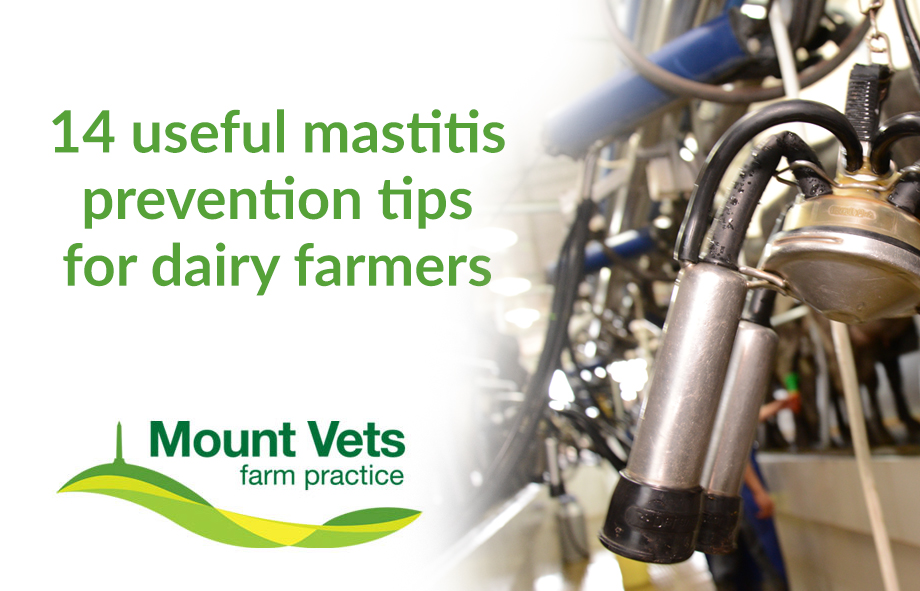Mastitis prevention:
Some useful tips to keep your dairy herd happy and healthy
We hope you find these tips on mastitis prevention useful and as always if you need further advice please give us a call.
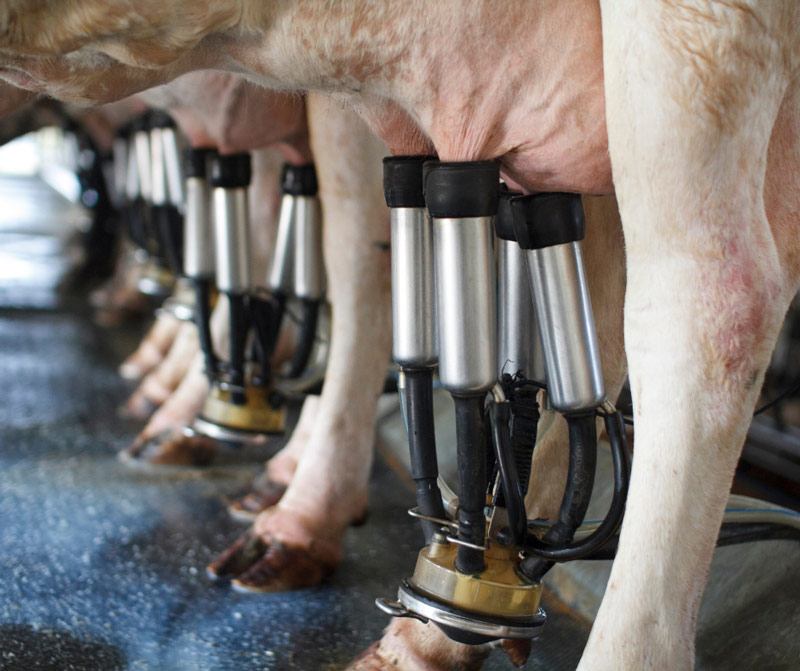
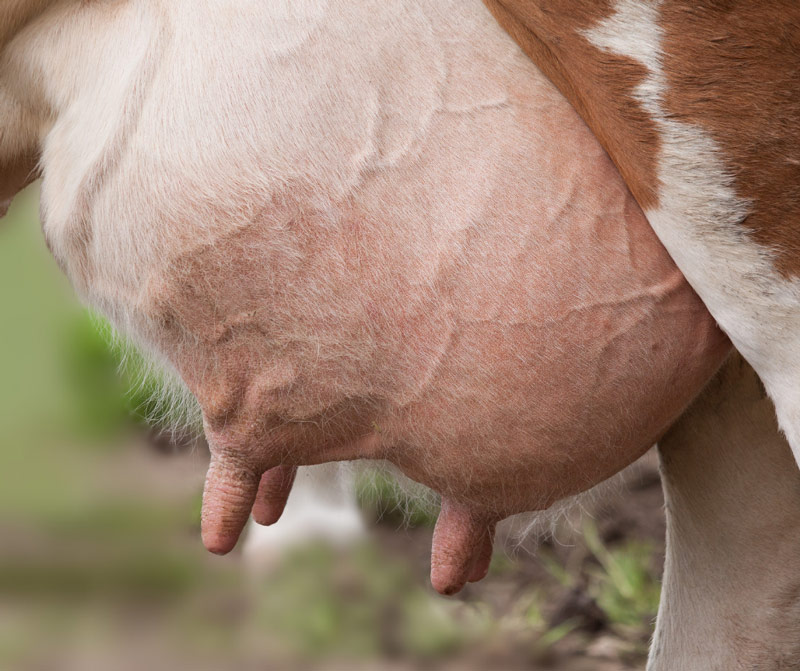
1: Gloves should be worn by all milkers at all times when milking
These have a smooth surface which bacteria have problems attaching to. They should be kept clean during milking by regular dipping in a bucket of disinfectant, containing peracetic acid.
2: Pre-dip all teats prior to milking
Preferably use a frothing teat cup which will sterilise the skin around the base of the teat, helping to reduce cluster contamination. If the teat is clean at the start of milking, it reduces the cluster contamination and so reduces mastitis occurrence.
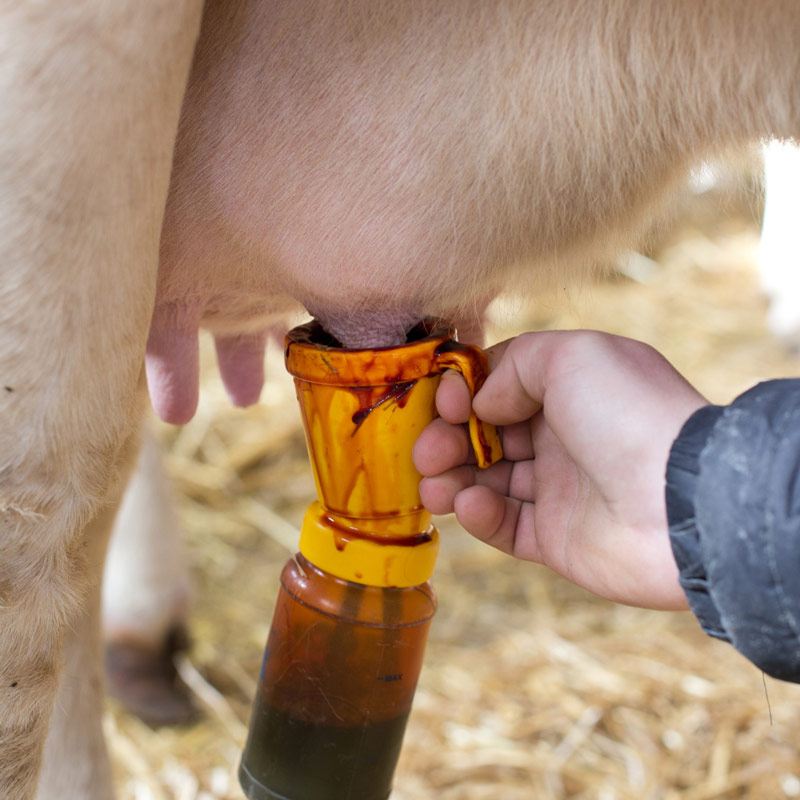
3: All clusters should be sterilised between all cows
Use a bucket, spray or drop hose to deliver the cluster cleaning product. This product should contain peracetic acid which has a 15 second bacteria killing time. Once the problem is under control, clusters could be cleaned only after mastitis/high cell count cows or before fresh / at risk cows, if you wish.
4: Only use one piece of paper towel per cow
This prevents the spread of contagious mastitis.
5: Keep cows standing up after milking for 30 minutes
This ensures the teat end has had time to close before they lie down, preventing the entrance of bacteria.
6: Separate the cows into two groups, of high and low cell counts
Milk the low group first, to help prevent spread from the infected to the non infected cows.
7: Use a good thick iodine based post dip or a barrier dip
There are some good value dips on the market that are much thicker and you may find these help. One is called Mazocare. The most common barrier dip is called Valiant (bit pricey but does a good job).
8: Pre-strip teats prior to milking
This removes most of the bacteria in the teat, reducing cluster contamination, and mechanically prepares the teat for milking reducing damage.
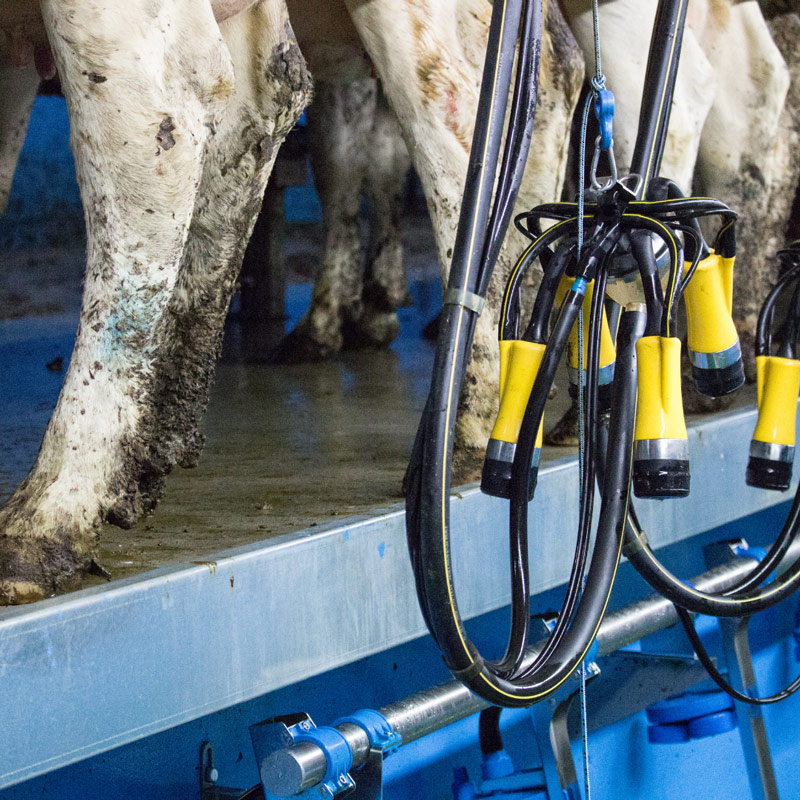
9: Don’t use pressure hoses in the parlour while the cows are being milked
You can splash dirty water up onto open teat ends, causing mastitis.
10: Cubicles should be limed at the back every day after bedding up
This reduces the bacteria in the area where the udder sits, reducing the environmental mastitis.
11: Beware of using the dump bucket on both mastitic cows and the fresh calvers
The freshly calved cows are most at risk and so should either be milked first and/or the cluster washed thoroughly in cluster dip between each cow, even between mastitic cows.
12: Keep tails clipped (most already done) and singe hair off udders using a lance
This will help to keep the udders cleaner.
13: Sample any new case
Put the sample in the freezer where it will keep for up to 3 months. These can be grouped and assessed to find the causative bacteria.
14: Use a teat sealant at drying off, in conjunction with an antibiotic tube
To prevent cows from picking up infections in the dry period.
